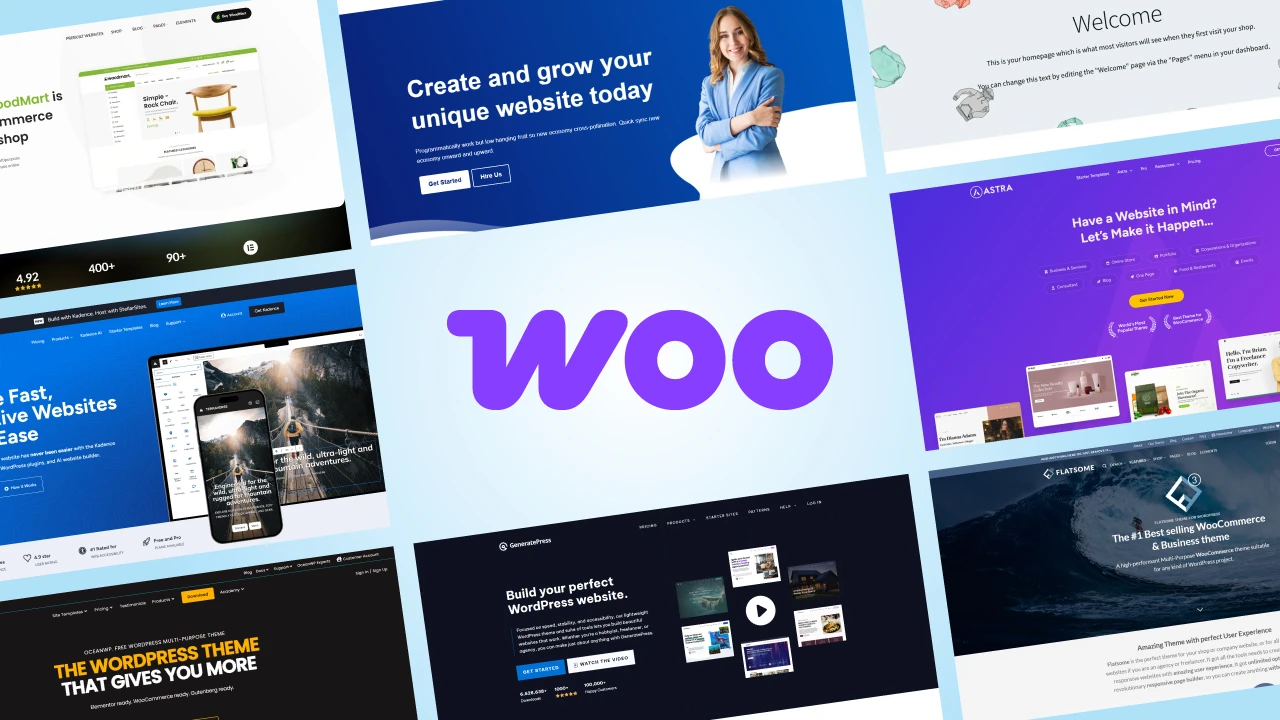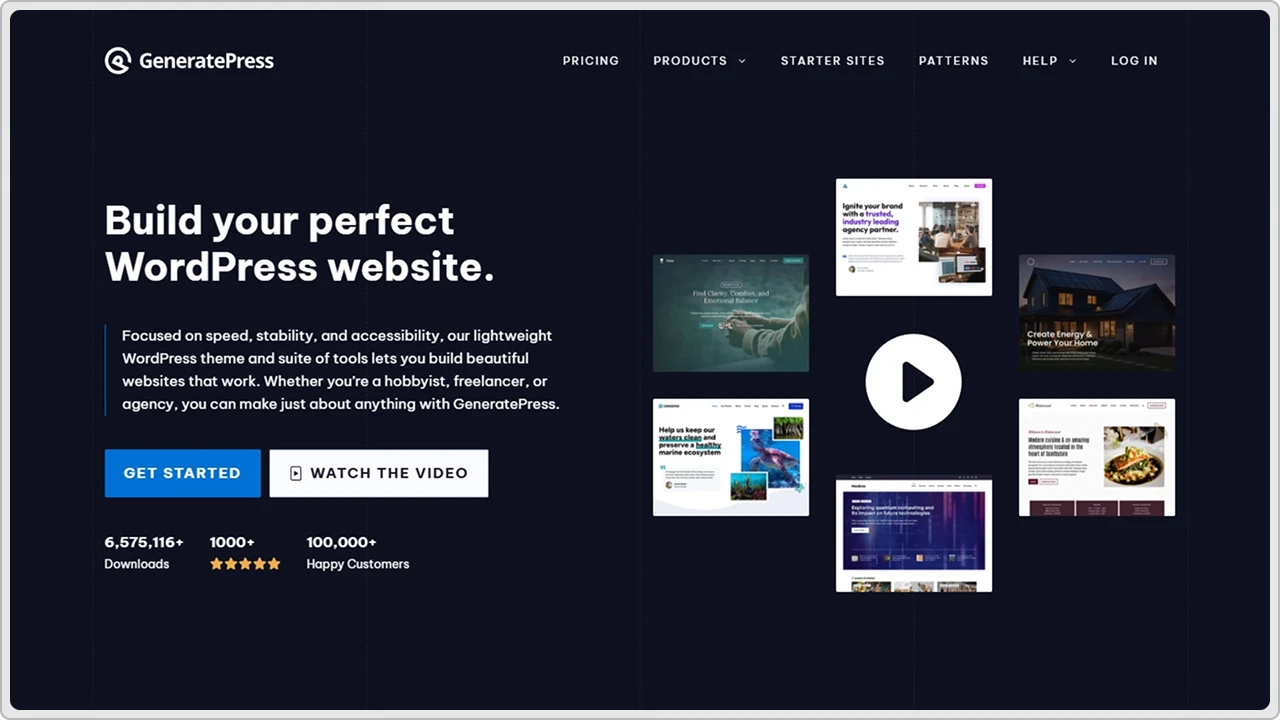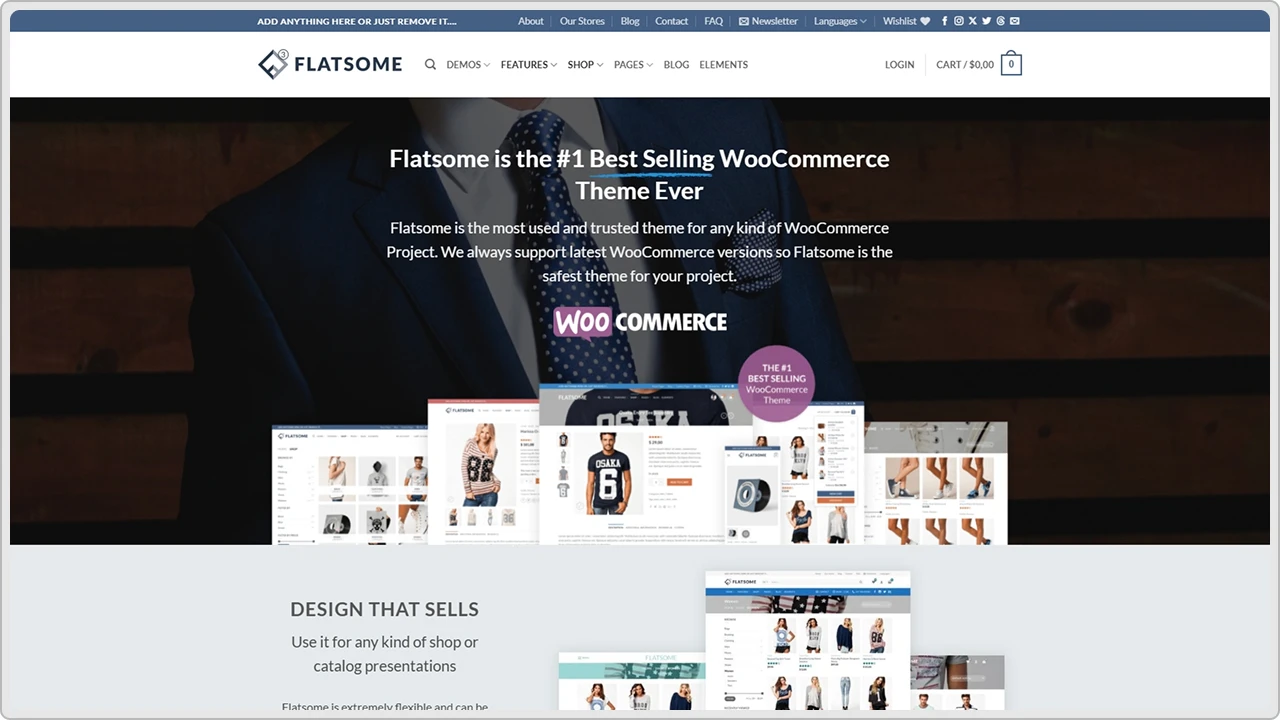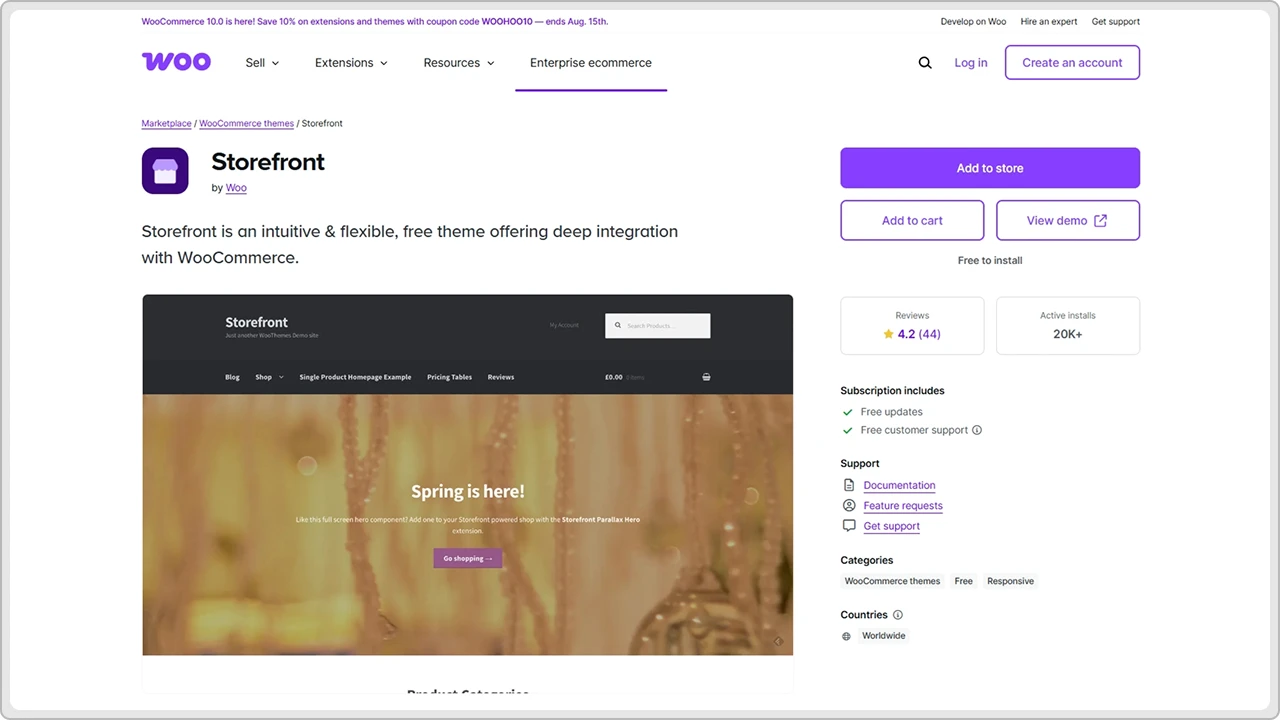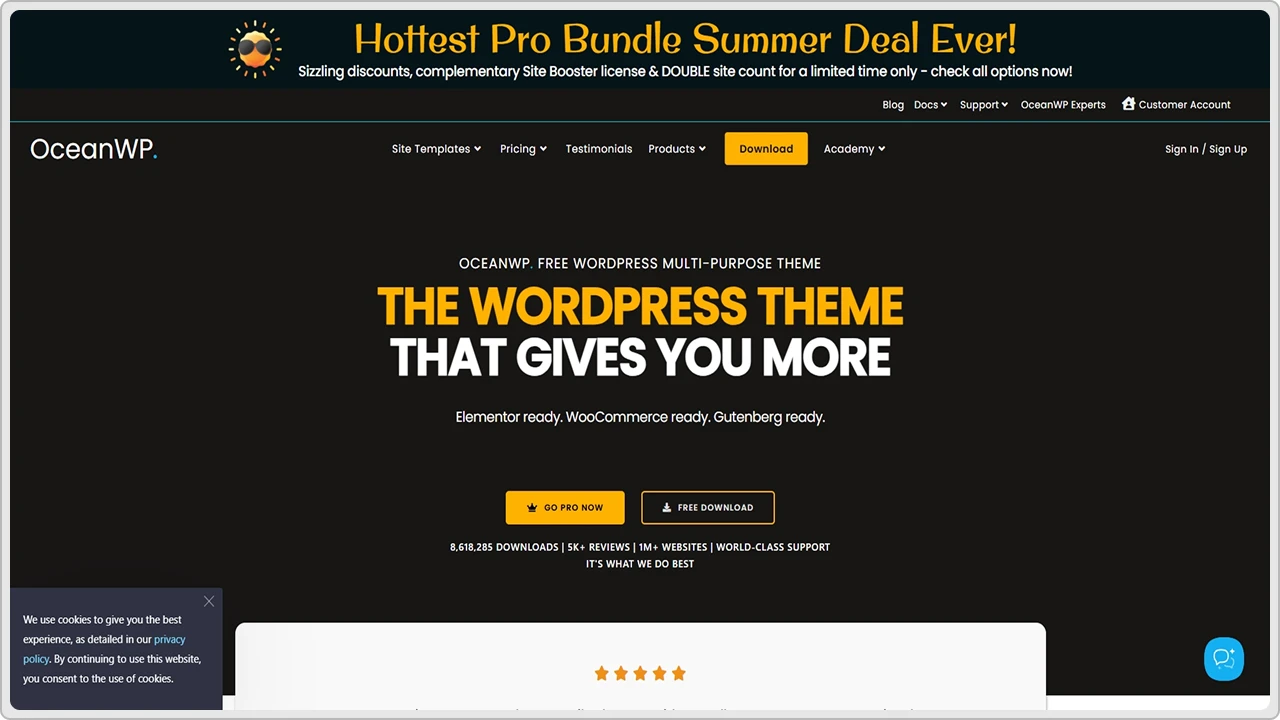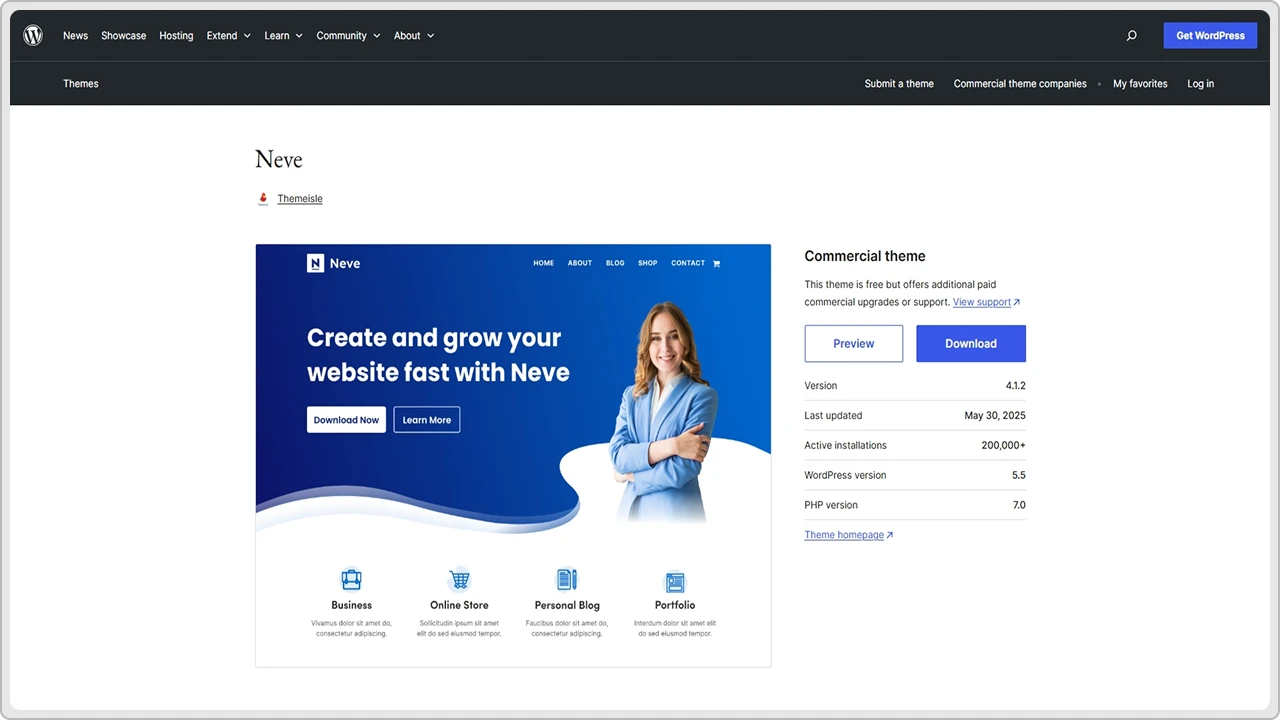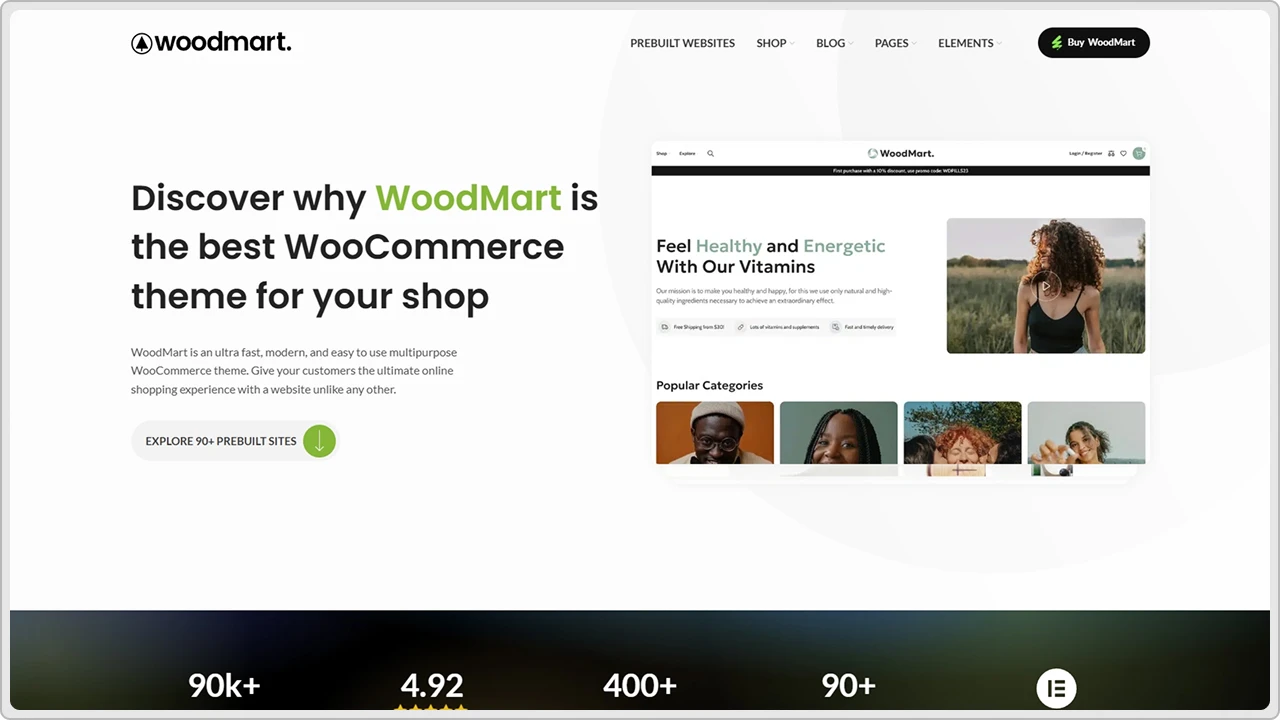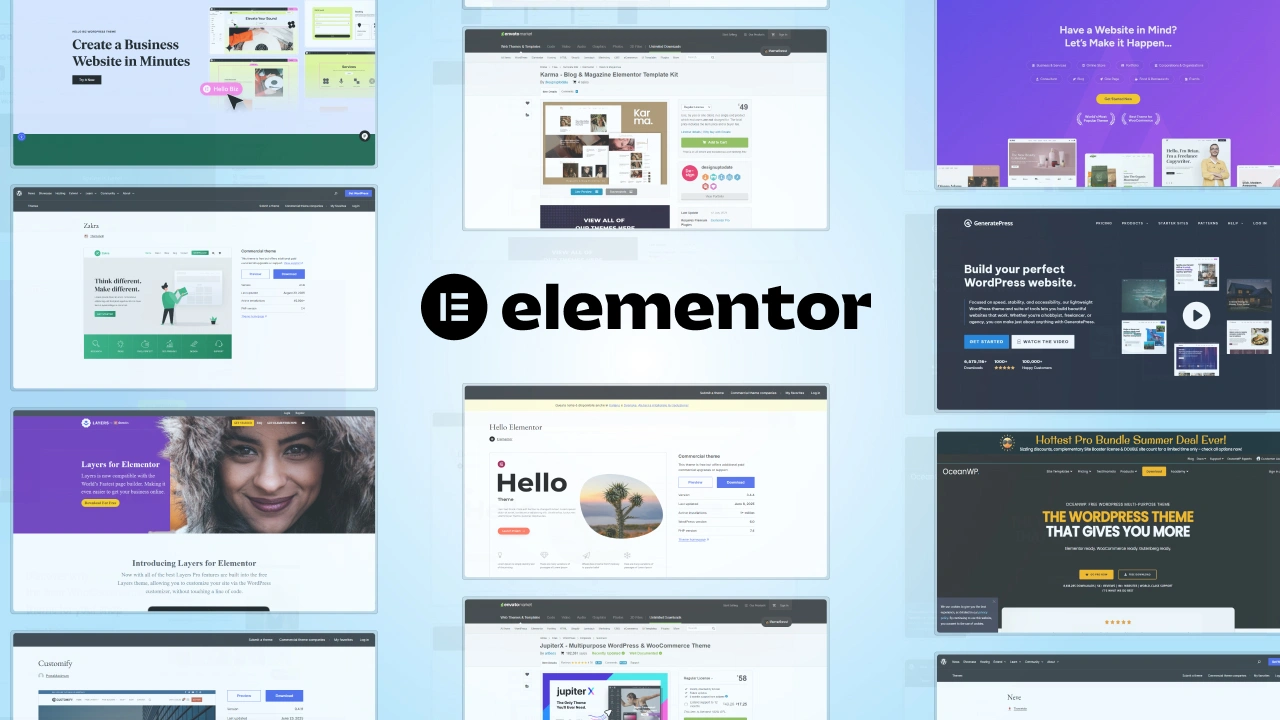Running an eCommerce store means packing your site with many moving parts such as images, product descriptions, videos, customer reviews, payment gateways, and more.
Are all of these necessary?
Absolutely. Every element plays a role in creating a rich shopping experience for your customers, but they can also slow your site down if you’re not careful.
And in eCommerce, speed isn’t just a bonus or a value-add, it’s a must-have. It directly impacts your bottom line.
A slow store frustrates customers, hurts your SEO rankings, and can cost you sales. Add to that the need for clean design, mobile responsiveness, and smooth navigation, and suddenly your choice of theme becomes a big deal.
That’s why high-performing WooCommerce themes matter. These themes aren’t just about looks—they’re built to load fast, support seamless purchases, and work with all the tools your store needs.
In this post, I’ve rounded up 8 of the top WooCommerce themes that strike the right balance between performance, flexibility, and great design, so you can focus on growing your store without worrying about what’s under the hood.
- A slow WooCommerce store can hurt conversions, SEO, and user experience — choosing a fast, well-coded theme is essential.
- The best themes are lightweight, mobile-optimized, SEO-friendly, easy to customize, plugin-compatible, and regularly updated.
- Themes like Astra, GeneratePress, Flatsome, Kadence, Neve, and WoodMart offer a great balance of speed, design flexibility, and built-in eCommerce tools.
- Many of these themes support tools like WP Rocket and make it easy to create multilingual websites.
- Bottom line: your theme sets the foundation — choose wisely, optimize carefully, and you’ll build a store that looks great and performs even better.
What Makes a WooCommerce Theme “High-Performing”?
Not all WooCommerce themes are built the same. Some look nice on the surface but fall apart when you actually start building out your store. Others are packed with so many features that they end up slowing everything down.
So, what exactly makes a theme high-performing?
Here are a few key things to look out for:
1. Speed: Let’s start with the obvious. A fast-loading theme is essential. Customers won’t wait around for a slow page to load, and neither will Google. A well-coded theme should be lightweight and optimized for performance right out of the box, even before you add any speed plugins.
2. SEO-Friendly Structure: Your theme affects how search engines read your site. Clean code, proper HTML tags, schema markup, and mobile responsiveness all help with SEO. A good theme gives your store a solid technical foundation to rank better.
3. Mobile Optimization: A huge chunk of online shopping happens on phones. Your theme should look and function just as smoothly on mobile as it does on desktop. That means clear buttons, readable text, fast loading, and easy navigation, no pinching or zooming needed.
4. Easy Customization: You don’t want to be stuck with a cookie-cutter look. High-performing themes offer flexibility, whether that’s through built-in design options, compatibility with page builders, or solid support for custom CSS. You should be able to make your store yours without needing a WooCommerce developer every time.
5. Plugin Compatibility: Your store’s going to need plugins for SEO, payments, marketing, shipping, and more. A good theme plays well with the major WooCommerce plugins so you don’t run into annoying conflicts or broken layouts.
6. Regular Updates & Support: Things move fast online. You want a theme that’s regularly updated to stay compatible with the latest versions of WordPress and WooCommerce and ideally one backed by a support team that can help if something goes wrong.
Now that you know what to look for, let’s get into the actual themes that tick all these boxes.
Our team at cmsMinds specializes in building high-performing WooCommerce stores. Whether you’re starting from scratch or need help fine-tuning your theme, we’re here to help.
Top 8 WooCommerce Themes for High-Performing eCommerce Sites
There are hundreds of WooCommerce themes out there, and let’s be honest, a lot of them look great on the demo but fall short once you start using them. The themes below aren’t just about flashy design. They’re fast, flexible, and built to handle the real demands of an online store.
Let’s walk through 8 solid options worth checking out. Each one is handpicked for performance, design quality, and user experience by cmsMinds.
1. Astra
Astra has earned its spot as one of the most popular WordPress themes, and it’s not just hype. This theme is built with performance in mind from the ground up. It’s incredibly lightweight, loads fast even on shared hosting, and offers tight integration with WooCommerce, making it a go-to choice for eCommerce stores of all shapes and sizes.
One of Astra’s biggest strengths is how beginner-friendly it is. You don’t need any coding knowledge to make your store look great, and if you’re short on time or inspiration, you’ll love the huge library of professionally designed starter templates. Just import one, customize the content, and you’re good to go.
But Astra isn’t just for beginners. Advanced users and developers also appreciate its flexibility, clean code, and compatibility with major page builders like Elementor, Beaver Builder, and Gutenberg. It’s also accessibility-ready and regularly updated, which means it stays in step with the latest WooCommerce and WordPress standards.
It also offers detailed documentation, so you can troubleshoot, customize, and launch confidently even if you’re not a developer.
Why it’s great:
- Mobile PageSpeed Score: 91/100
- First Contentful Paint (FCP): 1.8s
- Largest Contentful Paint (LCP): 1.5s
- Cumulative Layout Shift (CLS): 0.01
- Speed Index: 1.4s
- Time to Interactive (TTI): 1.2s
- Total Page Size: ~840 KB
- HTTP Requests: 20
- Total Load Time: 1.9s
Note: Performance may vary based on plugins, images, and hosting environment.
2. GeneratePress
GeneratePress is a favorite among performance-focused users. This theme is extremely lightweight, cleanly coded, and built with speed at its core. If you care more about how your store performs than flashy animations or bloated features, this theme delivers exactly what you need.
What makes GeneratePress stand out is its simplicity. You’re not overwhelmed with unnecessary extras, and that means faster load times and fewer things to break. But don’t confuse simplicity with limitations, as it’s highly customizable, especially if you’re using the premium version, and it integrates beautifully with WooCommerce.
It also plays well with block-based design (especially with the companion plugin GenerateBlocks), making it a solid choice for anyone who wants more control over layout and design without sacrificing speed.
Why it’s great:
- Mobile PageSpeed Score: 94/100
- First Contentful Paint (FCP): 1.6s
- Largest Contentful Paint (LCP): 1.4s
- Cumulative Layout Shift (CLS): 0.01
- Speed Index: 1.2s
- Time to Interactive (TTI): 1.0s
- Total Page Size: ~770 KB
- HTTP Requests: 17
- Total Load Time: 1.7s
Note: These results were from a clean install with sample products and minimal plugins.
3. Flatsome
If you’re the kind of store owner who wants full creative control without diving into code, this one’s worth a serious look. It’s packed with design options and a powerful live page builder that lets you see changes as you make them; ideal for tweaking layouts, product pages, and landing sections on the fly.
The great thing is, it’s built specifically for WooCommerce. That means the theme isn’t just “compatible,” it’s purpose-built for online stores, with features like quick view, wishlists, product sliders, and sale countdowns baked right in.
Despite all the customization tools and visual bells and whistles, it holds its own when it comes to speed. It’s not quite as feather-light as something like GeneratePress, but for a design-heavy theme, it performs better than you’d expect.
You can further improve performance using caching plugins like WP Rocket, especially for sites with large product catalogs.
Why it’s great:
- Mobile PageSpeed Score: 85/100
- First Contentful Paint (FCP): 2.1s
- Largest Contentful Paint (LCP): 1.9s
- Cumulative Layout Shift (CLS): 0.04
- Speed Index: 1.7s
- Time to Interactive (TTI): 1.6s
- Total Page Size: ~1.2 MB
- HTTP Requests: 28
- Total Load Time: 2.2s
Note: Tested on a standard product catalog setup with homepage slider enabled.
4. Kadence
Not all themes manage to balance speed, features, and ease of use, but Kadence pulls it off surprisingly well. It’s one of the newer names compared to longtime favorites like Astra or Flatsome, but it’s quickly earned a solid reputation among both beginners and pros.
What makes Kadence stand out is how much it gives you for free. The base version already includes deep WooCommerce integration, global design settings, and starter templates that actually look modern, not like something from 2012. The paid version adds more layout control, hooks, and header/footer options, but honestly, the free version alone is enough to build a beautiful, fast-loading store.
It also feels smoother to use than many other themes in this space. The customizer is intuitive, the settings are well-organized, and everything feels built to work with you, not against you.
Why it’s great:
- Mobile PageSpeed Score: 92/100
- First Contentful Paint (FCP): 1.7s
- Largest Contentful Paint (LCP): 1.4s
- Cumulative Layout Shift (CLS): 0.01
- Speed Index: 1.3s
- Time to Interactive (TTI): 1.2s
- Total Page Size: ~890 KB
- HTTP Requests: 19
- Total Load Time: 1.8s
Note: Tested with the Kadence Starter Template plugin and WooCommerce demo products.
5. Storefront
Built by the folks behind WooCommerce itself, Storefront is the official default theme, and it’s free. You won’t get flashy or awesome design elements or built-in customization panels like with premium themes, but what you do get is a rock-solid foundation that’s fast, stable, and 100% compatible with everything WooCommerce throws at it.
This well-favoured WooCommerce theme is extremely lightweight, which means fewer things to load and fewer chances of plugin conflicts. That makes it an excellent starting point for stores that care more about function than frills or for developers who plan to build a custom look on top of it.
Design-wise, it’s simple and minimal. It won’t win any awards for visual flair on its own, but that’s not really the point. It’s clean, mobile-friendly, and gets out of the way so your products can take center stage.
Why it’s great:
- Mobile PageSpeed Score: 89/100
- First Contentful Paint (FCP): 2.0s
- Largest Contentful Paint (LCP): 1.8s
- Cumulative Layout Shift (CLS): 0.02
- Speed Index: 1.5s
- Time to Interactive (TTI): 1.4s
- Total Page Size: ~780 KB
- HTTP Requests: 16
- Total Load Time: 2.0s
Note: Performance was tested using the base Storefront theme with no custom styling or third-party builders.
6. OceanWP
Here’s a theme that gets a lot of love from people who want creative freedom without having to touch code. OceanWP offers serious design flexibility, especially when paired with a page builder like Elementor.
If you’re building a visually rich eCommerce website with lots of layout sections, product types, or dynamic content, it gives you the tools to bring your ideas to life.
It’s not just about looks either. OceanWP comes with built-in WooCommerce features like off-canvas filters, product quick view, sticky add-to-cart, and modal popups. These small touches help improve the shopping experience without having to install tons of extra plugins.
While it’s heavier than some minimalist themes, it can still be optimized to perform well. And importantly, it includes settings to help improve your site’s security, such as disabling XML-RPC, hiding WordPress version numbers, and limiting access to core files. a thoughtful touch, especially for online stores that handle customer data.
Why it’s great:
- Mobile PageSpeed Score: 84/100
- First Contentful Paint (FCP): 2.3s
- Largest Contentful Paint (LCP): 2.0s
- Cumulative Layout Shift (CLS): 0.03
- Speed Index: 1.8s
- Time to Interactive (TTI): 1.7s
- Total Page Size: ~1.3 MB
- HTTP Requests: 32
- Total Load Time: 2.4s
Note: Tested on a standard product layout with Elementor and core OceanWP features enabled.
7. Neve
If you’re looking for something clean, modern, and lightning-fast, Neve deserves a spot on your radar. It’s one of those WordPress themes that’s incredibly lightweight but still manages to pack in a good amount of customization flexibility, especially for WooCommerce.
What makes Neve stand out is its focus on performance right out of the box. It uses a mobile-first approach, has minimal dependencies, and works seamlessly with popular page builders. Whether you’re building a new store from scratch or refreshing an existing one, it gives you a smooth setup experience and a polished final product.
From an SEO perspective, Neve also ticks the right boxes. Clean code structure, responsive design, and fast loading times help boost user experience, which can have a real impact on your search results over time. You’re not just building a store that looks good, you’re building one that Google actually wants to show.
Why it’s great:
- Mobile PageSpeed Score: 93/100
- First Contentful Paint (FCP): 1.6s
- Largest Contentful Paint (LCP): 1.3s
- Cumulative Layout Shift (CLS): 0.01
- Speed Index: 1.2s
- Time to Interactive (TTI): 1.1s
- Total Page Size: ~800 KB
- HTTP Requests: 18
- Total Load Time: 1.6s
Note: Tested on a WooCommerce starter template using default settings and no added plugins.
8. WoodMart
If you’re planning to build a store with lots of categories, filters, and product types, maybe electronics, furniture, or multi-vendor marketplaces, WoodMart is a strong contender. It’s a premium theme built specifically for WooCommerce, and it’s packed with design and functionality options that feel more like a custom build than an out-of-the-box solution.
This isn’t just a pretty theme either. WoodMart has the performance and structure to back it up. It’s built with clean, optimized code, offers full control over layout and styling, and includes dynamic elements like AJAX filters, instant product search, and advanced variation swatches, all without the need for dozens of third-party plugins.
It’s regularly listed as the most popular WooCommerce theme on marketplaces like ThemeForest, with thousands of positive reviews and a loyal user base. And with a solid SEO ready structure, mobile responsiveness, and speed optimization tools, it’s not just designed to look great — it’s built to compete in search rankings too.
It’s also compatible with popular multilingual plugins like WPML, making it easy to create multilingual websites that cater to global audiences without added complexity.
Why it’s great:
- Mobile PageSpeed Score: 87/100
- First Contentful Paint (FCP): 2.1s
- Largest Contentful Paint (LCP): 1.8s
- Cumulative Layout Shift (CLS): 0.02
- Speed Index: 2.0s
- Time to Interactive (TTI): 1.9s
- Total Page Size: ~1.1 MB
- HTTP Requests: 30
- Total Load Time: 2.1s
Note: Tested on a default WoodMart demo with WooCommerce, no additional plugins, and performance mode enabled.
Conclusion
At the end of the day, your WooCommerce theme isn’t just about how your store looks, it’s about how it performs. Speed, mobile responsiveness, SEO, and user experience all start with a solid theme, and the ones we’ve covered here check all the right boxes.
Whether you’re building something new or completing a redesign, choosing a high-performing theme sets the tone for everything else. It makes your WooCommerce store faster, smoother, easier to customize, and better equipped to scale.
Many of these themes also come with detailed documentation, support for tools like WP Rocket, and even the ability to create multilingual websites. So, you’re not just getting a good-looking storefront, you’re getting a future-ready one.
Whichever one you go with, don’t forget: the right theme is your foundation. Get that part right, and the rest becomes a whole lot easier.
Let cmsMinds audit your site and recommend the best high-performance theme for your needs.

